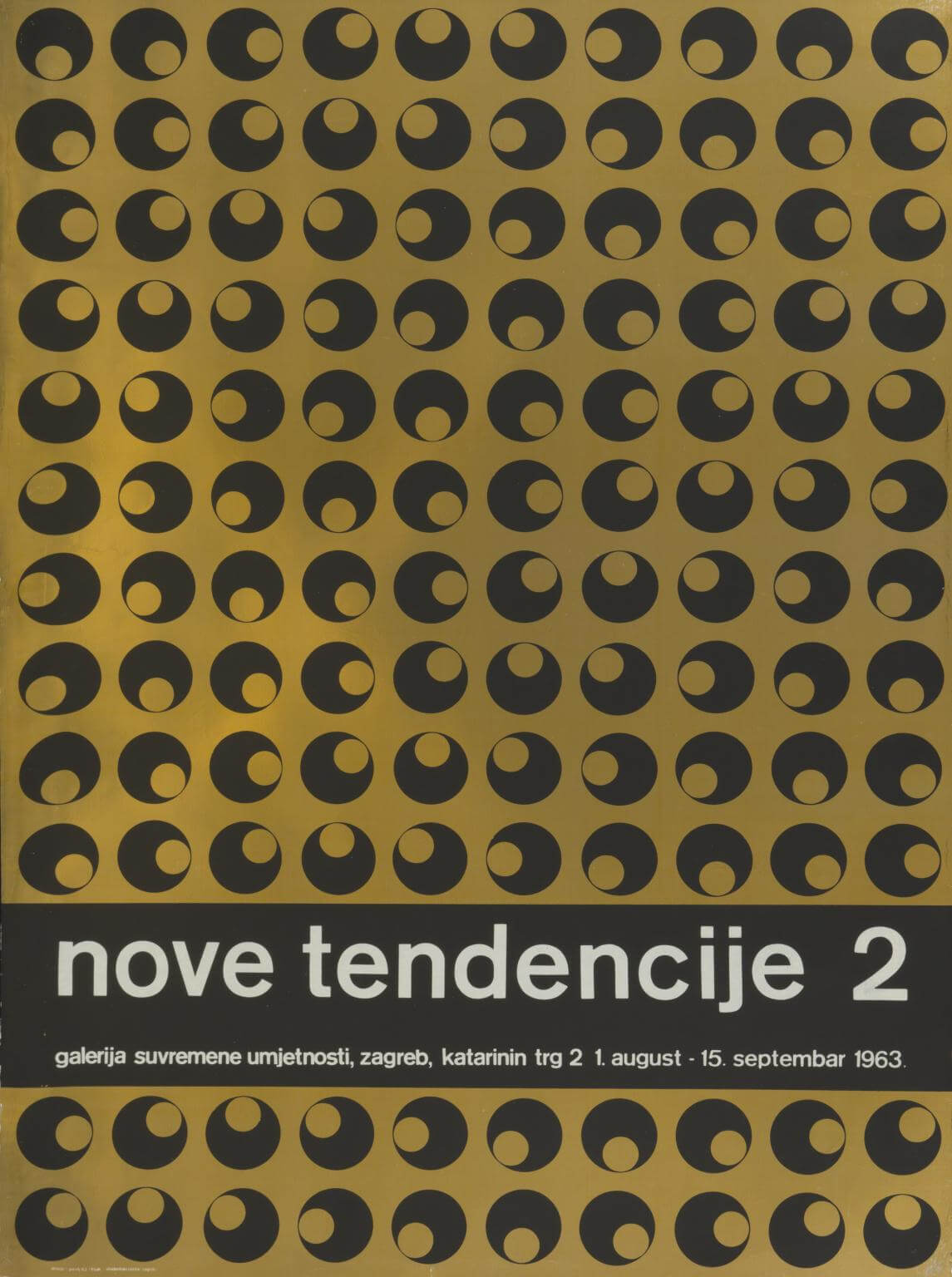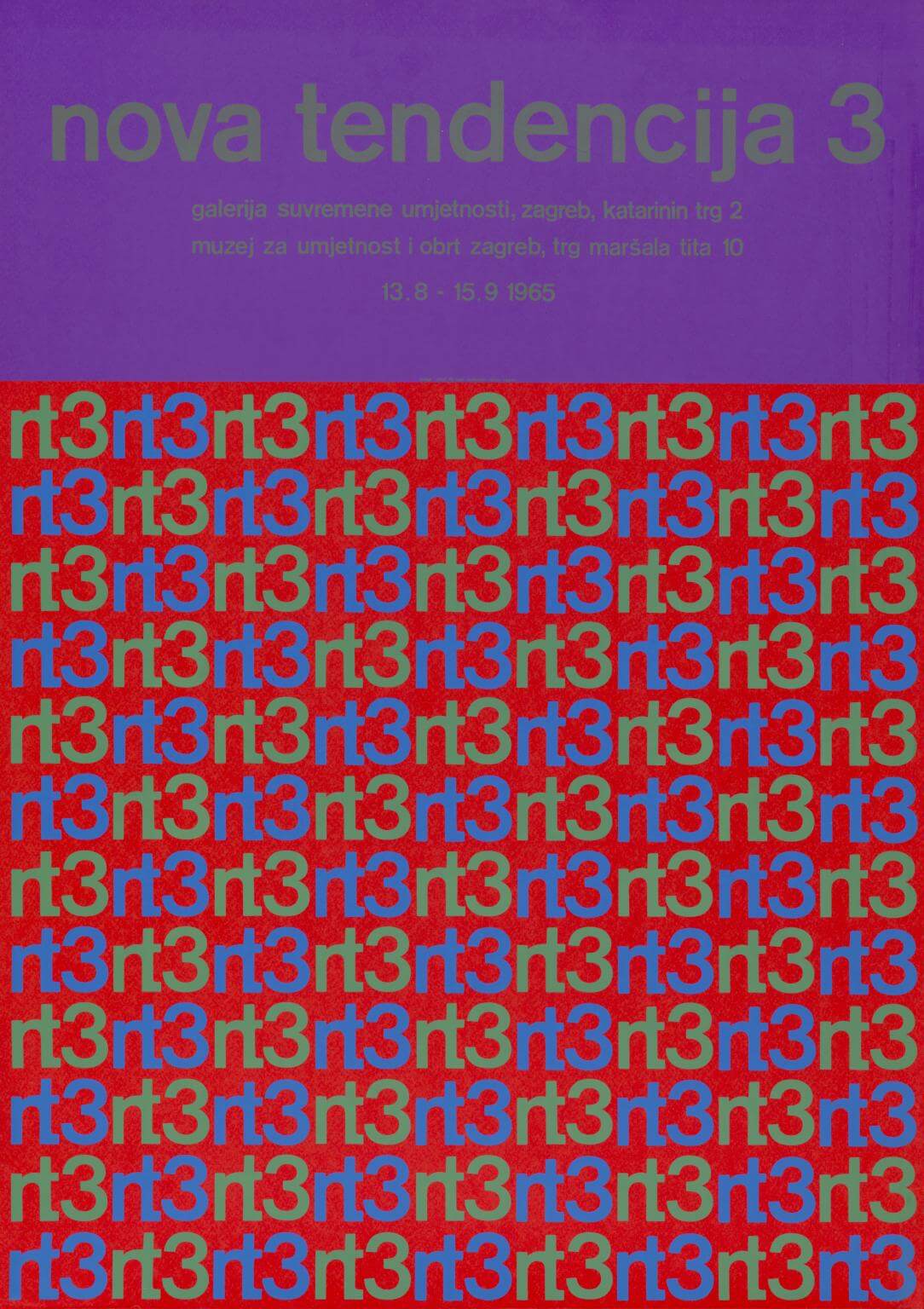New Tendencies: The Kinetic Art Movement From Zagreb
February 23, 2022 - An art movement met with worldwide recognition that helped establish Zagreb as a cultural capital. A look at the Kinetic Art movement from Zagreb.
New Tendencies (Nove tendencije) is a series of posters curated by Croatian artist Ivan Picelj, which originally took place at Zagreb’s Museum of Contemporary Art (MSU), in what was then Yugoslavia, from 1961 to 1969. It was an international movement of European artists and theorists who sought after working with new art techniques that differed from abstract expressionism and complex, non-geometric art.
Ivan Picelj is known as one of the most characteristic artists to have come from Croatia and as one of the rare Balkan artists to fully adopt an avant-garde way of thinking and conceptualising art. Aside from leading the New Tendencies are movement, he designed numerous publications, journals, posters, and logos, including the exhibition posters for the MSU, in addition to their exhibition catalogues, and later, the institution’s basic typography and logo.
The art of the New Tendencies movement advocated experimenting with the visual investigation of surfaces, structures, and objects, creating the new concept of methodically planned art, using ideas from mathematics, scientific research and colour theory, and sometimes computers to create images. This method came to be known as “programmed art”, in which basic plastic units were multiplied within a grid, which became an instantly recognisable style of the art movement. Complex, abstract forms were rejected, as simple colour palettes were used and shapes were reduced to simple geometric elements. It was not only visually innovative, but relevant to what was happening in the art world at the time. As Europe was emerging from over a decade of post-war austerity and reconstruction, the artists of that era were reflecting a new age of economic growth and technological progress in their practices.

New Tendencies 2 poster by Ivan Picelj, 1963. © Ivan Picelj Estate

New Tendencies 3 poster by Ivan Picelj, 1965. © Ivan Picelj Estate
The artists of the New Tendencies movement saw the viewer not as a passive spectator but as an active participant, thus encouraging the artist to create work that triggers complex visual sensations, activated by the viewer’s perception of shape and colour. This resulted in some of the movement's most well-known pieces of “moving” kinetic art, created with the use of optical “op” effects - from the scientific understanding behind how these effects are perceived by the viewer.
A key idea behind New Tendencies was how they used the methodological production of their art to commercialise it. Making art that could easily be replicated, they hoped to stop artworks from becoming marketable luxury goods. Coming from the socialist values of its country, the movement emphasised the social role of the artist, and promoted the idea of collective work in an attempt to end the “bourgeois” idea of the artist working as a lone genius. The movement was a collective effort of artists from Austria, France, Germany, Italy and Switzerland, participating alongside Ivan Picelj and fellow Zagreb artist Julije Knifer in the first New Tendencies exhibition in 1961.
The exhibition was such a success that it led to further instalments of the movement, including Tendencies 2 and 3, the latter themed around the movement in Paris. However, Zagreb continued to be the movement’s prime location, functioning as “a kind of unofficial cultural capital of Yugoslavia”, according to Croatian artist, independent curator, and researcher Darko Fritz.
The popularity of New Tendencies triggered an international Op-Art-boom, which was endorsed by an exhibition at the New York MoMA in 1965, titled The Responsive Eye. Now, geometric abstract art is as popular as ever, and the innovative art movement from Zagreb has made its way into academic studies and art galleries all over the world - including an exhibition at London's Tate Modern, running until 26 June 2022.
For more, check out Made in Croatia.
Museum Practicum Project: Curator and Art Education by Zagreb Contemporary Art Museum
September 13, 2021 - The Museum Practicum Project by the Museum of Contemporary Art Zagreb (MSU) will teach 30 selected young people aged 15-25 about the professions of curator and other museum jobs, as well as contemporary art while giving them a chance to promote their own work.
With the many good practices of additional education and popularising scientific and educational fields for young people (such as the SCOPE Project by the Višnjan Observatory), the Museum of Contemporary Art (MSU) in Zagreb is also making its contribution in line with their field. Their Museum Practicum project that started on September the 1st and will last until June the 30th, 2022, wants to introduce young people aged 15-25 to contemporary art, and to the basics of curator practices and other types of museum work. Thirty selected people will be mentored by the project team, partners, and hired experts and artists.
''The work with these young people will be held via online platforms, and it will include moderated conversations, mentorships, and co-creating virtual exhibitions from MSU holdings and exhibitions of their own work in the medium of photography created within the project,'' says MSU's website.
In this way, the project wants to provide young people with the opportunity to develop their own creative skills and knowledge through a virtual space and open space for both their expression and self-promotion.
''Even though curriculum reforms have already started, the need for young people interested in developing their social and creative skills is strong, as the education system does not provide that enough. Additionally, there is the insufficiency in regional representation and the limited participation opportunity of young people in art and culture activities due to the lack of extracurricular activities, all of which has been additionally worsened by the COVID-19 pandemic,'' says MSU, addressing the importance of the Museum Practicum Project in light of the many issues faced by Croatian schools.
The further recognition of the importance of the project is evident by the financial support of the EU from the European Social Fund, and the total budget of the project is 201,092.83 kuna.
The Museum Practicum Project and its wider goal of educating young people in preparing virtual exhibitions is similar and in line with the Women and Technology Program at the Nikola Tesla Technical Museum, about which TCN previously wrote. Add in the overall challenges in the Croatian education system, from a lack of extracurricular activities to the previously mentioned problems of the straight A epidemic, and projects like these seem like welcome solutions to help young people recognise their worth and find passion in their lives.
Learn more about Zagreb on our TC page.
For more about education in Croatia, follow TCN's dedicated page.
Happy Birthday, MSU! 16 Free Attractions for Visitors on Saturday
The Museum of Contemporary Art is having a birthday party – and we’re all invited
‘Rebel with a Vision’: Retrospective Exhibition of Vjenceslav Richter at Museum of Contemporary Art
A retrospective exhibition of Vjenceslav Richter works opens next week, October 10.


